Actuators have always been on the frontline of automation, providing the “push and pull” that extends human capabilities to operate everything from delicate, robotic, pick-and-place applications to 10-ton agricultural combines. Now, as the industrial world becomes increasingly digitised and connected, a new generation of actuators is fulfilling that role with greater intelligence, simplicity and economy, while overcoming increasingly challenging environmental conditions.
A brief history of smart actuation
The evolution from mechanical to electronic actuation began some 50 years ago at the dawn of the Information Age, when actuator designers began meeting the demand for better information about mechanical operations by appending external devices such as electric relays and position monitoring devices. The earlier actuation systems still required some manual involvement, but that began to change in the seventies as market demand for easier operation, better price performance and environmental integrity spurred innovation in actuator design.
Most pivotal was the embedding of microcomputer chips into the actuators themselves. Starting in the nineties and blossoming in the new century, this innovation enabled incorporation of previously external functions such as switching, position feedback and system diagnostics into the actuator itself. And in 2013, Thomson Industries introduced the first actuator with an embedded standard network card, simplifying participation between networks. Smart actuation had officially come of age.
Today, as actuator users continue to demand greater ease of use, connectivity and visibility into their operations, smarter actuators are reporting for duty. These actuators are fully equipped to provide greater control and robust feedback, while supporting the development of applications that could have been barely imagined less than a decade ago.
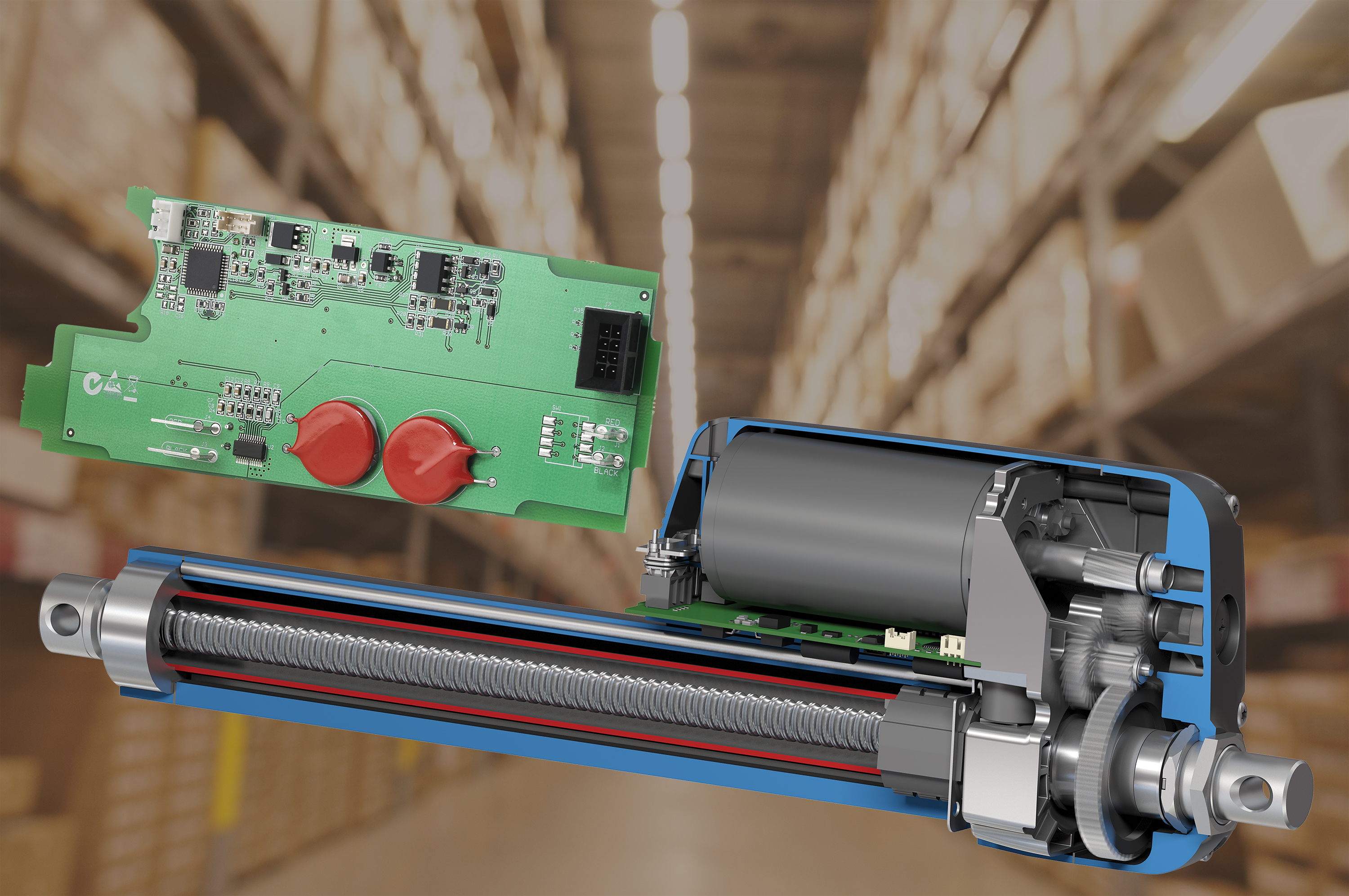
Smart actuators integrate electronics within the actuator housing, enabling switching, synchronisation and networking to be managed automatically based on signals from a common external source, such as a programmable logic controller (PLC).
The benefits of integrated electronics
By integrating electronics within the actuator housing, smart actuators enable switching, synchronisation and networking to be managed automatically based on signals from a common external source, such as a programmable logic controller (PLC) or other control unit. Participation in more complex automation schemes becomes feasible, and a more compact system footprint simplifies operation and lowers cost of ownership.
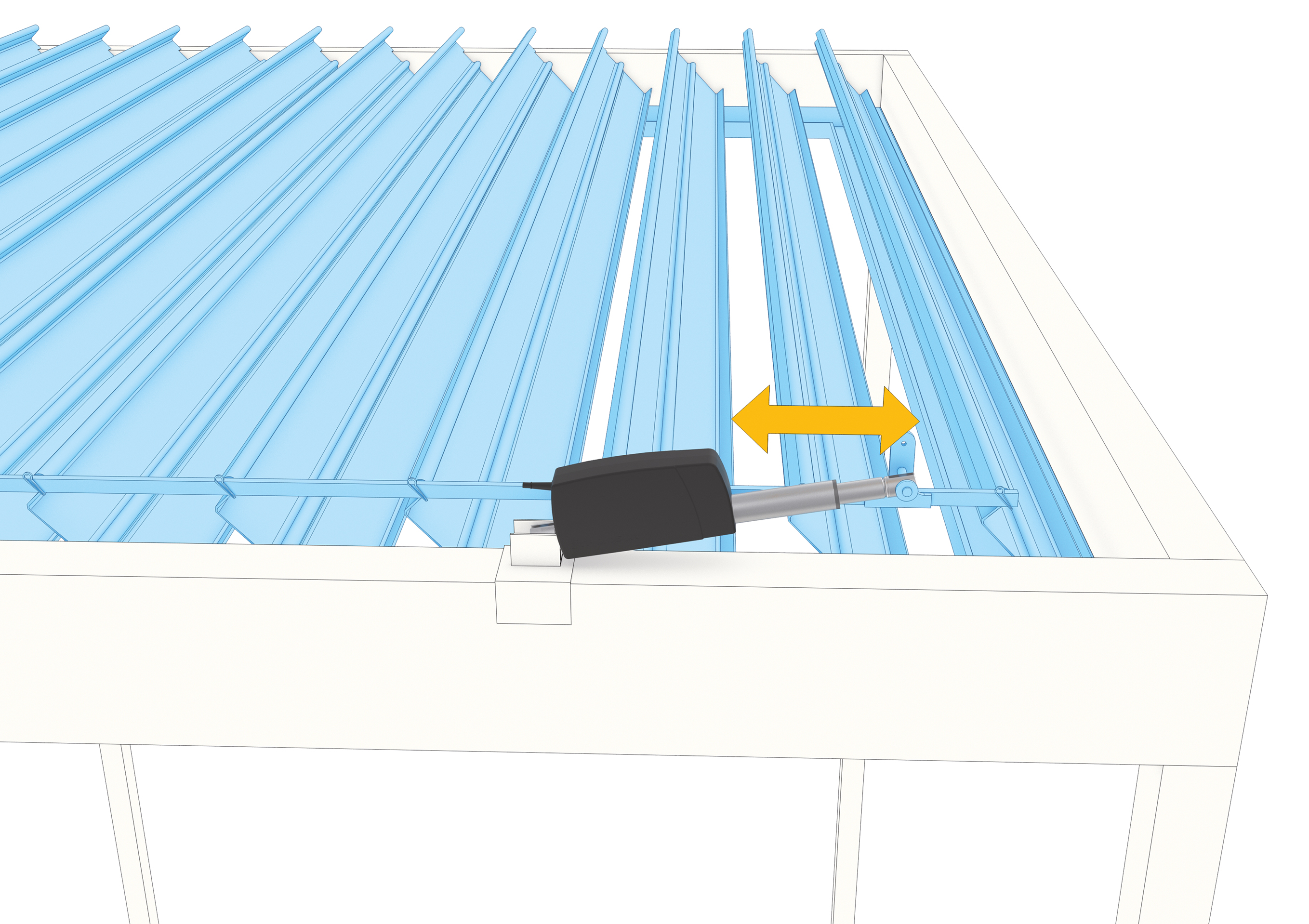
Smart actuation is utilized in many structural automation applications such as this outdoor patio, which uses an electromechanical linear actuator to open and close its louvers
Key among the embedded functionalities that enable this integration are:
• Low-level power switching. Traditional actuators often rely on large, power-inefficient relays or independent controllers to extend, retract or stop the extension tube. By using onboard electronics to manage the power, current at the switches or contacts can be reduced from 20A to less than 22mA, which enables a simpler, less expensive system design. Actuators can be programmed to extend, retract or stop the tube using low-current signals, providing a soft start. This improves safety by reducing the hazard of electrical shock, simplifies design by allowing lower-rated control components, and puts less stress on system batteries and charging systems.
Low-level power switching also improves position control by enabling dynamic braking control. Once the power is cut to an actuator, it could take between 5 and 10 mm to coast to a full stop, depending on how the actuator is mounted. Electronic actuators enable dynamic braking functionality, which can reduce that coast to about a half millimeter by electronically forcing a short between motor leads inside the actuator. This improves repeatability and positioning capability.
• End-of-Stroke Indication. Knowing when the actuator has reached the end of a stroke is important for safety and performance reasons. If an actuator is used to lock a device into place, a simple LED light triggered by the output can confirm it is locked and will protect the operator from an unsafe condition. This functionality can also be configured to notify the end user of an end of a stroke, providing a safety interlock while also extending the working life of the actuator.
• Bus operation. Integrated electronics make it possible for actuators to apply networking standards, such as the J1939 standard proliferated by the Society of Automotive Engineers to be the Controller Area Network (CAN) bus for heavy duty vehicles. J1939 is a high-level communications protocol that provides a standard messaging structure for communications among network nodes under control of an electronic control unit (ECU). Every message on an actuator module representing a J1939 bus node has a standard identifier indicating message priority, data and ECU source. This enables plugand-play interchanges of supporting devices that share the same network and comply with the messaging structure.

Figure 1. System with CAN Bus.
Figure 1 shows a typical CAN bus network, illustrating four actuators with built-in CAN buscompliant intelligence and connected directly to both a battery and control source. The green box represents gears, sensors or other components that could also be connected to the network. The orange line represents the two-wire bus that transmits the low voltage of power needed for the system, and the blue line represents the wires that are used for information exchange.
Where J1939 is a communications protocol that is popular for off-highway applications, integrated electronics are increasingly applied in plant floor, material handling and other applications. Actuators with integrated electronics can now be programmed to participate in networks and systems involving industrial communication protocols such as HART and network protocols such as Ethernet.
Such advanced position control and switching enable programming of the drive to perform with an infinite number of movement profiles and custom motion strategies. Users can, for example, program the actuator to seek forward a few millimeters or make a small set of movements back and forth to reach a desired position. And because the system knows what it is supposed to do and monitors performance in real time, it can flag potential variances and trigger advanced algorithms to manage further alarms, corrections or shutdown.
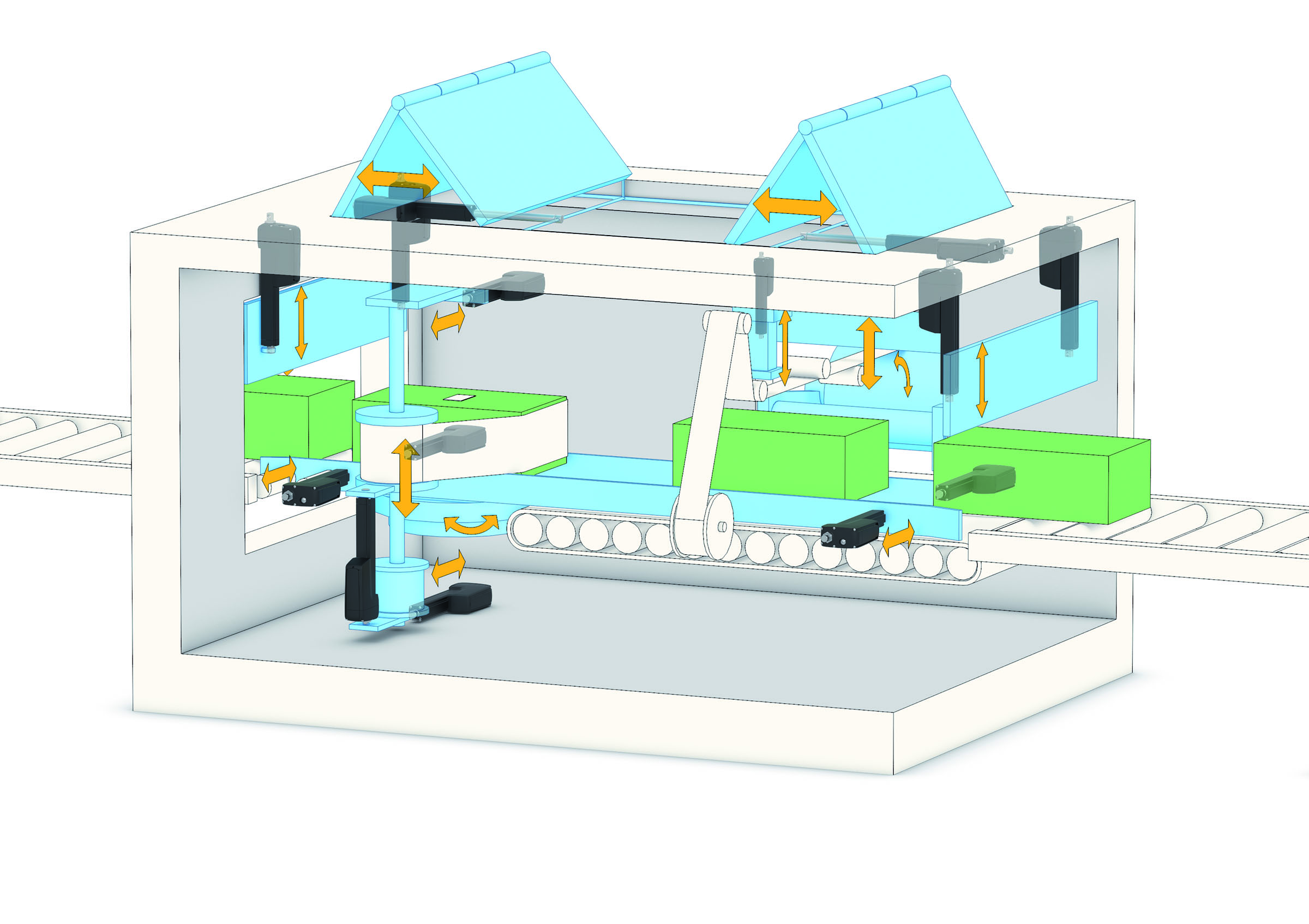
An interconnected factory using smart actuators in their machines benefits from reduced maintenance and downtime due to enhanced control capabilities and increased design flexibility
• Synchronisation. With integrated electronics and networking, system developers will have much greater capability to synchronise operations among multiple actuators. Users of smart actuators will be able to configure start-and-stop instruction, and the actuator electronics will handle the synchronisation.
Robust feedback
Electromechanical actuators already provide advantages over fluid-driven actuators in heavy duty, precision applications by delivering absolute position feedback but have traditionally done so with external potentiometers, encoders, limit switches and controls. Integrating the components into the actuator provides additional benefits, enabling absolute analog or digital position feedback at every point in the stroke.
To provide analog position feedback, potentiometers simulated in the internal electronics send voltage signals that alert users of the absolute analog position, speed and direction of the drive ̶from beginning to end of stroke. They also remember that position, so if power is lost, there is no need to return to a home position and reset the device. Because many mobile off-highway (MOH) machines are run by season and can sit idle for eight or nine months, it might sometimes be valuable to disconnect the battery to prevent it from draining. Without absolute position capability set at the factory, the user will have to recalibrate once they reconnect the battery.
Digital position readings can come from an integrated Hall Effect encoder, which provides a single-pulse train digital signal to indicate of incremental position and speed. This improves control by indicating actual position changes and speeds.
Smarter monitoring, diagnostics and maintenance
In addition to returning real-time position data to the user, the network can return results for ongoing monitoring of temperature, current, speed, voltage and other variables, which enable advanced condition monitoring, diagnostics and error handling. Feedback can arrive as quickly as 10 times per second, as the actuator constantly tests itself. If it detects a problem, such as surpassing a temperature threshold, for example, the actuator can stop mid-stroke or finish its programmed move, either fully retracted or extended, and send an error flag to the computer – all in fractions of a second. Following are some of the variables that can now be monitored with unprecedented efficiency:
- Current. Current monitoring is a critical safety feature that shuts down the actuator on overload and eliminates the need for the traditional noisy, mechanical clutch.
- Voltage. Continuous monitoring of voltage protects the actuator by preventing motion if it detects it operating in an environment outside of the acceptable range.
- Temperature. Internal temperature is monitored and, if outside the acceptable temperature range, the actuator is shut down after extending or retracting stroke. Built-in temperature compensation allows the actuator to push the rated load at lower temperatures without nuisance tripping.
- Load. Trip points can be calibrated at assembly to assure repeatable overload trip points independent of component and assembly variations. This not only assures repeatable performance, it relieves the end user of the need to recalibrate in the field.
With integrated electronics, all such functionality is available instantly to the end user and, via the network, it is potentially sharable in support of external troubleshooting. Once problems are identified, the plug-and-play capability gained by integrated standards simplifies repair and replacement. Where replacing a problematic hydraulic actuator might require a service call from the manufacturer for hours or even days of disassembly, reassembly, system bleeding and testing, a smart actuator can be replaced in less than 20 minutes.
Environmental resistance
The ability to monitor themselves not only makes smart actuators easier to operate and maintain, their complex electronics also present a level of vulnerability that make this monitoring essential. Ensuring reliable operation requires designing smart actuators to meet the most stringent industry standards for protection from ingress by solid objects and liquids, extreme temperatures, operational shock, vibration, corrosion, voltage variation and electromagnetic interference.
Not every actuator must be protected from all environmental assaults, and each OEM requires its own profile of standards. Likewise, vendors have developed their own sets of procedures for meeting those standards. A major advantage of actuators that embed previously external devices is that compliance with the appropriate standards is done at the factory and need not be repeated once the systems are installed.
Putting smart actuators to work
Smart actuators are finding their way into numerous industries. The MOH vehicle market was among the first to deploy them because, in part, of the tremendous cost and performance benefits that are attainable by having control and automation capabilities available in the field. However, any application is a candidate for consideration. Here are a few examples of markets that are already going “smart”:
- Factory Automation. A provider of customised industrial automation systems for the textile industry has used low-level switching capability to eliminate costly external relays. This made it easier to provide customers with a more compact automation system. Built-in potentiometers also provide them crucial position information.
- Robotics. Designers of an automated valet parking system most likely could not have accomplished their solution without smart actuators. Patrons signal that they are ready to pick up their cars with their mobile phones, and an actuator-driven, robotic assembly delivers the car to them.
- Material Handling. Manufacturers of logistics trains use smart actuators to help increase load capacity, regulate operations and reduce maintenance. Low-level switching, verified positioning and end of stroke shut off are among the features frequently applied in material handling.
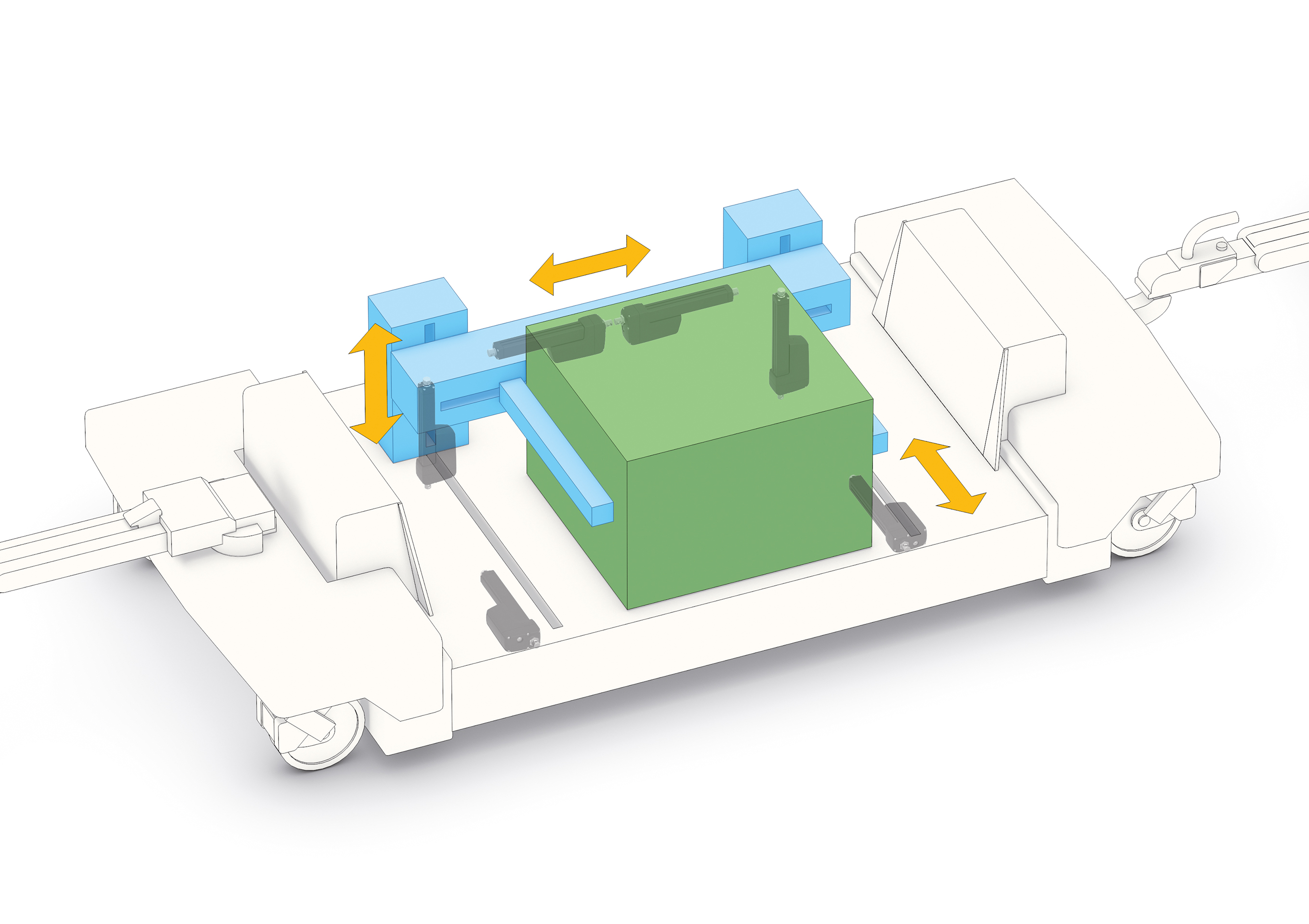
Smart linear actuators offer precise control and reliable feedback for logistic trains and automated guided vehicles (AGV)
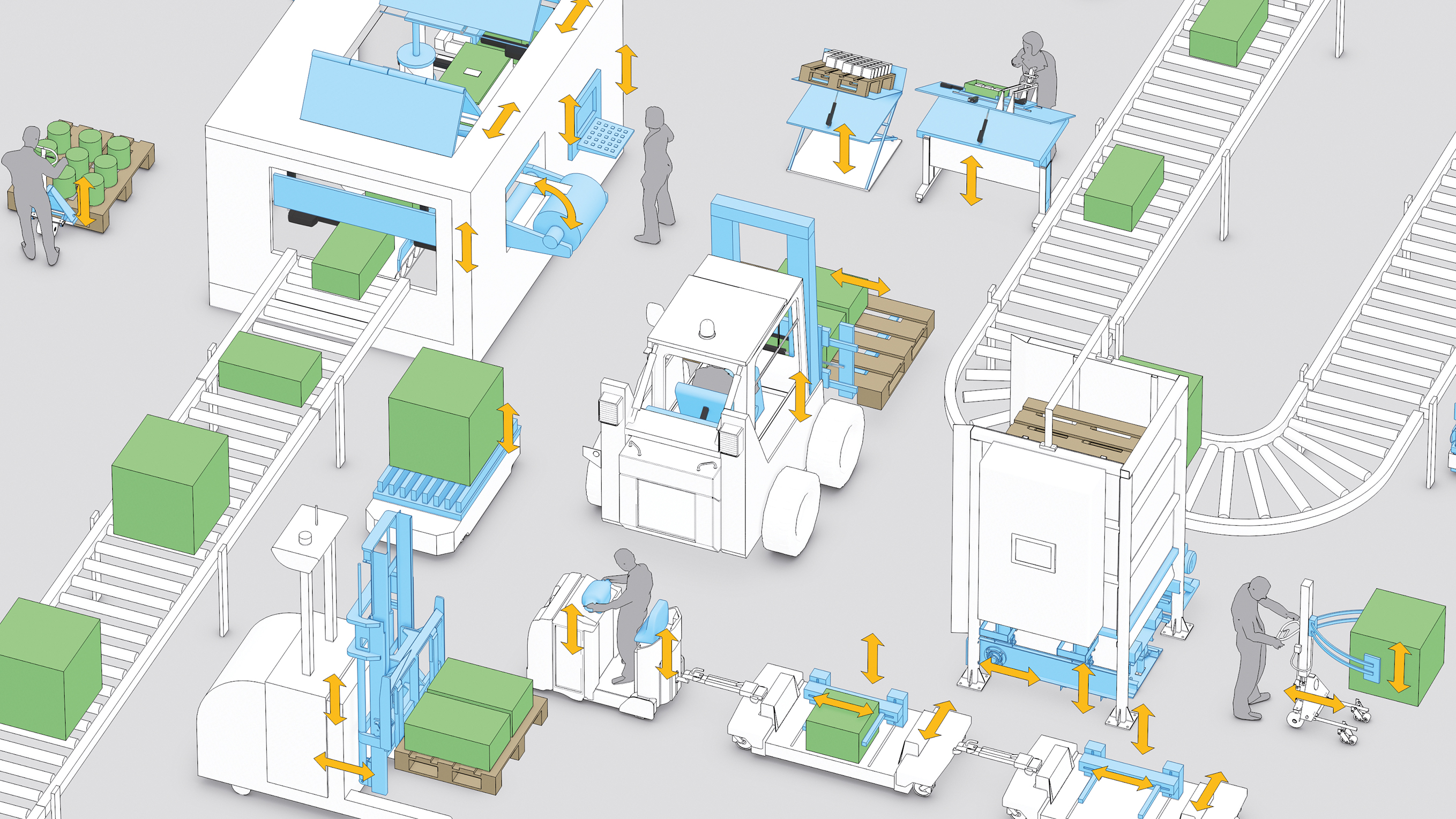
Once smart actuation is introduced into a facility’s automation process, the benefits are immediate and exponential. Machine design is simplified with increased flexibility and plug and play functionality, control capabilities are enhanced and energy usage is decreased
- Construction & Agricultural Equipment. A startup combine manufacturer used J1939 networking capability to enter its market with an attractive product. It was able to offer integrated control of actuators on five axes, including the rock trap door, gate latch, ladder, grain tank and auger.
- Solar energy. To store maximum energy, numerous solar panels must move in sync to follow the sun. One solar panel manufacturer accomplished this with smart actuators that fully leverage the embedded J1939 CAN bus compatibility.
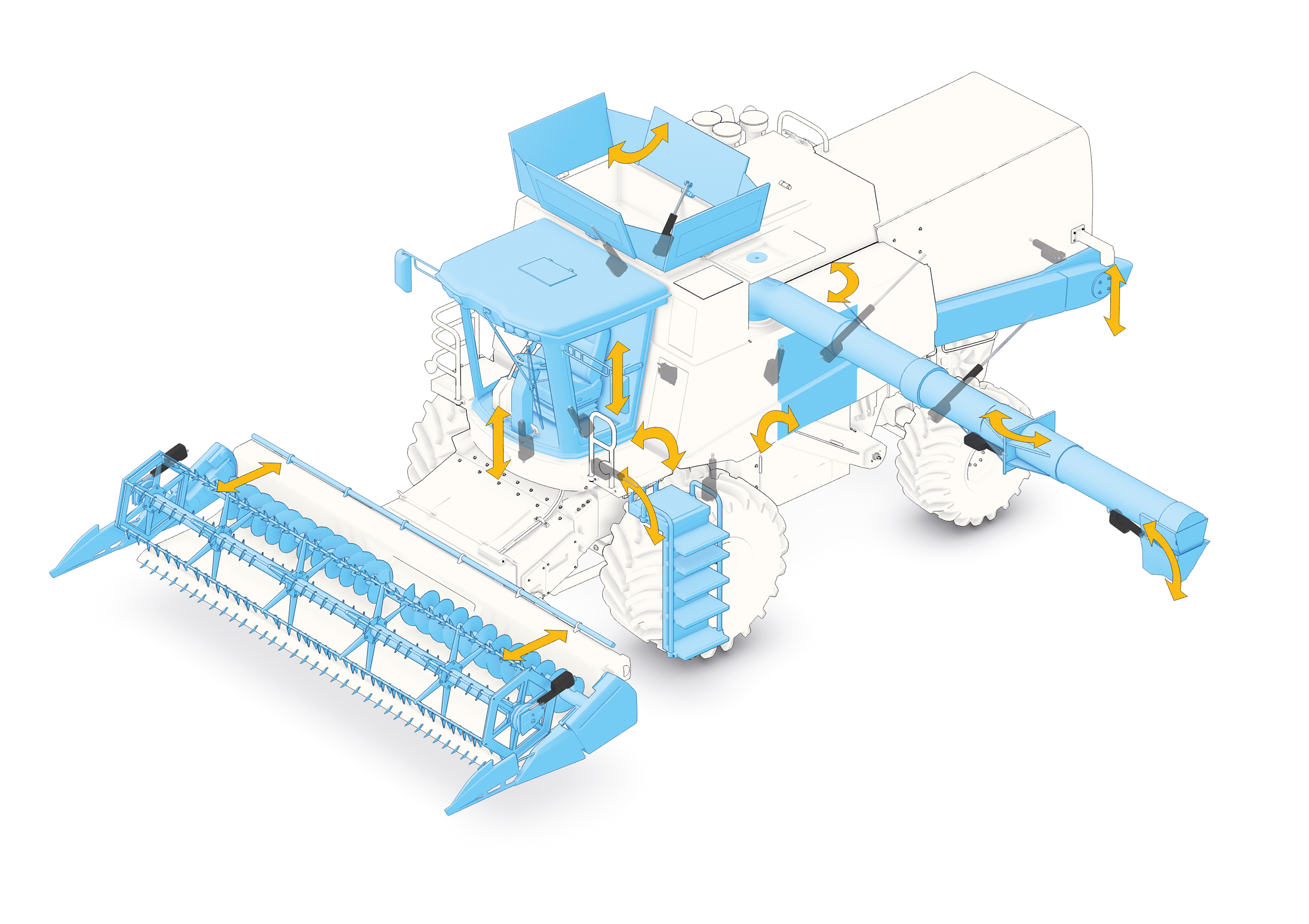
Mobile off-highway is a market where CAN bus version J1939 will be predominantly used.
- Waste disposal. A garbage handling system manufacturer relies on low-level switching to eliminate the need for expensive relays, and it uses integrated end-of-stroke signals to remove the cost and complexity of external limit switches. Integrating the electronics and routing the cables to a common plug also eliminated the need for both five meters of external cabling and creating specialised wiring harnesses to accommodate it.
The next generation
Given their computational and communications capabilities, it is not difficult to imagine extending the reach of smart actuators for increased integration with other similarly enhanced sensors, data acquisition devices and production equipment, as well as other actuators. As such, today they are fully ready to participate in the emerging industrial internet of things (IIoT,) where every device not only has intelligence and networking capability but also an internet address and the ability to share and subscribe to information sources. And the IIoT is part of an even broader industrial revolution, in which computational, communications and physical domains increasingly interact without human command. Known as cyber-physical systems or, sometimes, just Industry 4.0, this promises new levels of efficiency, economy and safety. Smart actuators are well poised to continue evolving to meet the connectivity and informational transparency that tomorrow’s applications will demand.


